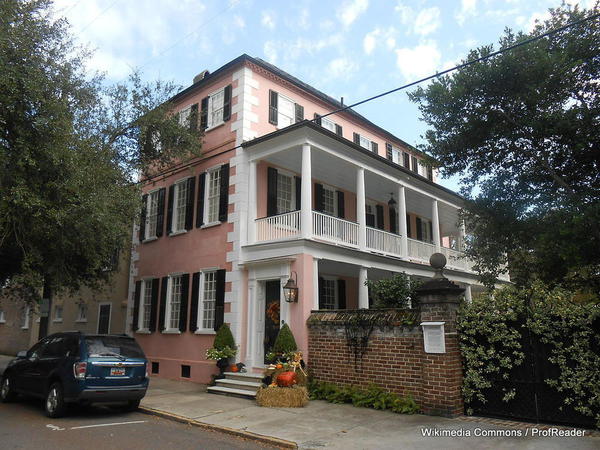TravelGumbo member Club2013, by e-mail, was the only one to correctly place Gumbo’s secret destination: Charleston, SC. He found the special characteristics in an almost generic “old town” streetscape, and hit the nail on the head. So…here’s the back story:
Almost the first moment of my recent visit to Charleston, SC, while waiting for a table at the Hominy Grill, I began to notice an architectural peculiarity—narrow houses with no door, or rather with no door directly into the building. I wondered, and then put it aside in favor of fried green tomatoes, country-fried steak and buttermilk pie.
But over the next few days, all over historic Charleston, I spotted that pattern more and more, and even in some odd modern variations. Most of the houses had a door just to the side of the house, and a glance around the corner reveals that these doors open not into the house, but onto a porch running along the length of the house, fronting on some private space.
I’m a bit of an architecture bug, fascinated with how different places, different times and different circumstances call for different kinds of structures, so I began to poke around online. And what I found was the Charleston Single House, a type nearly unique to the Charleston area, and still reflected in many modern buildings.
When English settlers first came to Charleston in the late 17th century, the town was laid out in long narrow lots, and that is what created the shape of the houses. As a basic minimum, the houses were built two windows wide--no—room for a door—and four windows and a door on the long side. This basic house would have two rooms on each floor.
Why not a wider house on the lot? Outdoor space was needed, for a privy, a chicken coop, a place to keep a horse, etc. A wider house would have put the open space at the back and required giving up more space for a common alley.
You’ll notice that most of these houses have multi-story porches; locally they’re called piazzas. They are almost always on the south or west side of the house. In a hot damp climate, an outdoor space facing the prevailing local winds can be a lifesaver.
So, all in all, nothing random about the design, but a practical fit to the needs of the time and the people. If the lots had been half again as wide, perhaps there would have been no Single Houses.
The trendy and excellent Husk restaurant (above) is housed in a fairly large example, unusual in that its piazzas face the street--but it gives you a chance to see the typical 5-windows and a door, one room on each side.
The building above is an odd variation of the Single House. It's at the end of Meeting Street, near the Battery, and dates to the later half of the 19th century. It's a fairly large building, with a street entrance (right) directly into the building. But at the left, behind the very solid-looking windows of the facade—why, there's a triple-deck piazza!
I’m reminded that other places have specialty houses as well; Alexandria, VA, where I lived for a time, has Flounder Houses, like the one above. Half a peaked roof, and usually no windows on the back, like the fish's eyes. There’s still dispute over whether they were built that way for tax reasons, or with the idea of adding “the other half” later. And in New York City, you’ll find many old houses with larger windows, because real estate taxes were assessed on the number, not size of windows facing the street.
As for Charleston’s historic areas, they are a treat to walk and watch. There are large and stately homes, and small ones; little gardens opening to the street here and there, and of course the kind of impressive buildings that a prosperous society builds for its businesses and civic pride. And there’s even a small museum about slavery in a former slave market to remind us of the source of much of that wealth. Below, a variety of Charleston street scenes and buildings. In coming weeks, you’ll also have the opportunity to visit some of the houses with PortMoresby. Here’s a link to her blogs.
The old Post Office and Federal Court building; it sits on a corner referred to as the "four pillars of the law," with the City Hall on another corner, St. Michael's church on a third and the County Courthouse on the fourth. Federal, state, local and divine law in one spot.
The landmarked Farmers and Exchange Bank Building.
St. Philip's Episcopal Church (top) appears to block Church St., but the road actually curves around it. St. Michael's, center, was the church for some of the most important 18th and 19th century families. I wish I had taken time to visit the Circular Church, bottom.



Comments (2)